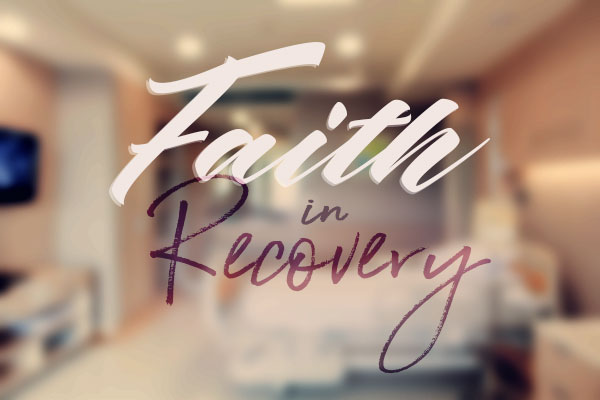Whether or not one has faith in the treatment, one needs sincerity, persistence and patience to give any therapy a fair-try and to assess and analyse what works for oneself and what does not.
By Pragati Oswal
“Do I need faith in the complementary/alternative/ integrative therapies to get better?” People ask me this question quite often.
When one treats with therapies which do not require the use of medicines or direct physical methods, the trained logical mind questions the processes that do not require the body to be altered by the way of direct chemical/physical intervention to influence the desired outcome.
First and foremost I would like to clarify what one must understand when one uses the terms like complementary medicine, alternative medicine and integrative health care.
- Complementary medicine – a non-mainstream therapy used together with conventional medicine.
- Alternative medicine – a non-mainstream practice therapy that is used in place of conventional medicine.
- Integrative health care often brings conventional and complementary approaches together in a coordinated way. It is a patient centred holistic approach to health care and wellness which includes mental, emotional, functional, social as well as spiritual aspects. It treats the whole person rather than one organ system.
In a field where the treatment has to be individualized at various level, the expertise of the therapist plays a very significant role. Unlike mainstream medicine which is more general by nature and the same medicine is given to most of the patients with similar symptoms, many types of alternative or complementary therapies would have different treatment for patients with similar symptoms. For example, the same set of acupressure-points, mind-body instructions etc. might not work for four different patients with ostensibly similar problem.
Also, mental, emotional and spiritual aspects are based on a subjective world-view formed over a period of time due to one’s likes and dislikes depending on one’s interactions, experiences as well as interactions. So, the therapist’s observation, interpretation and inference play a very significant role. Many a times due to a therapist’s incompetence, integrative forms of complementary and alternative medicine are dismissed as a matter of faith.
As far as the question of faith is concerned, in my understanding,faith is a product of mind!It is a metaphysical phenomenon that has tremendous influence on our perception and response to situations and circumstances.The moment one starts delve into how psychosomatic diseases are created one understands that a deep-seated belief system (based on subjective likes and dislikes) regarding one’s own self and situation is what can create, prolong as well as establish an illness. The opposite of this is also true. Hence the placebo-effect – a therapeutic outcome of an inert treatment because of the patient’s perception of the disease and its management. Did you know that 35% of patients get better even on placebos if they have faith in their Doctor and his expertise?
Having said that, my answer to whether or not one needs faith, my answer is “No! One does not need faith as a pre-condition!”.
Whether or not one has faith in the treatment, one needs sincerity, persistence and patience to give any therapy a fair-try and to assess and analyse what works for oneself and what does not.
Whether one pops in a pill which takes less than a minute, or stimulates acupressure points which takes a little longer or practices a yoga routine or meditative practice that take much longer time, the regularity matters. In other words, treat meditation, asana, pranayama and an acupressure point (or whichever therapy one chooses) like a non-invasive and a non-pharmacological medicine. Just like you pop in pills at regular intervals, you are required to take in the prescribed Integrative health combination.
I have personally weighed the role of faith in enhancing the therapeutic effect especially in the fields of energy healing as well as mind and body interventions.
Various studies have concluded that meditative practices and mind-body interventions influence the Hypothalamus Pituitary axis in a way that creates a sense of well-being. Well-being is conducive to over-all health and healing.
Well-being per se cannot be measured! What cannot be measured becomes vague, much like faith!
Let’s call “faith” a kind of an interest, liking or keenness, an inclination, positive attitude, an assurance or a kind of open-mindedness. In our general lives if we take up something with an open-mind or with interest, our chances of achieving the goal become higher. Interest or inclination gives us extra momentum or motivation to work hard tirelessly, effortlessly and naturally. To sum it up, faith is an emotional high, a state of mind which influences secretions of chemicals that have a positive, regenerative, “rejuvenat-ive”, healing effect on the body.
So, it might be acceptable to say that if one practices a non-mainstream method with sincerity topped with interest, a hint positive attitude or faith (as one may call it), one can respond faster.
I rest my case!
Medically, I ask you what you base your faith on?
- A Theory which has proven itself in practice. (From a researcher’s point of view, a scientific study with a probability or p ≤0.05)
- A convincingly logical possible outcome/explanation.
- A testimony from a trusted one.
- A therapeutic experience which has broadened your perspective.
If you agree with one or more of these, we are on the same page.
I would now like to share my own experience with turning “a life” around! Literally!
I am talking about an opportunity I got to apply and witness the results of one of the rarer applications of acupressure. I say ‘rarer’ as none of my colleagues have until now had a chance to use this technique in practice.
There’s an acupressure point that can be used to turn the baby in breech presentation.
One of the clients whose foetus was in a breech presentation in the 37th week of her pregnancy, got in touch with me after she was suggested C-Section in a week’s time. I felt excited and intrigued, as I had, until now, only studied about the property of certain pressure points which could normalize the position of the foetus.
First attempt: 48 hours from the time pressure was applied, the client went for a check – up which confirmed that the foetus had turned head-down but its head wasn’t engaged yet. In the next two days the client felt as if the foetus had changed its position again. I wouldn’t comment on that as I am not trained to clinically determine the positioning of the foetus. However, she was very certain as she could sense foetal movements in her abdomen.
Second attempt: Three days later, in the beginning of her 38th week, I applied pressure again. Additionally, I tied seeds to the pressure points so that the pressure would be sustained for atleast 24 hours. I also asked the client’s husband to tap the seeds tied to the points to make sure that pressure is consistent. In the subsequent check-up, the foetus had come to the normal delivery position with its head fixed.
It’s a thrilling moment when theory confirms itself with practical results. Also, my faith jumps a quantum as I share this chronicle of a baby up-turned.
Pragati Oswal is a Complementary and Alternative Medicine (CAM) Practitioner and Researcher with expertise in Yoga, Acupressure and Energy Healing. She uses these therapies as a substitute for medicines, to facilitate pain relief, healing and wellness. She can be reached through her website www.pragatioswal.com or her facebook page https://www.facebook.com/PragatiOswal/












